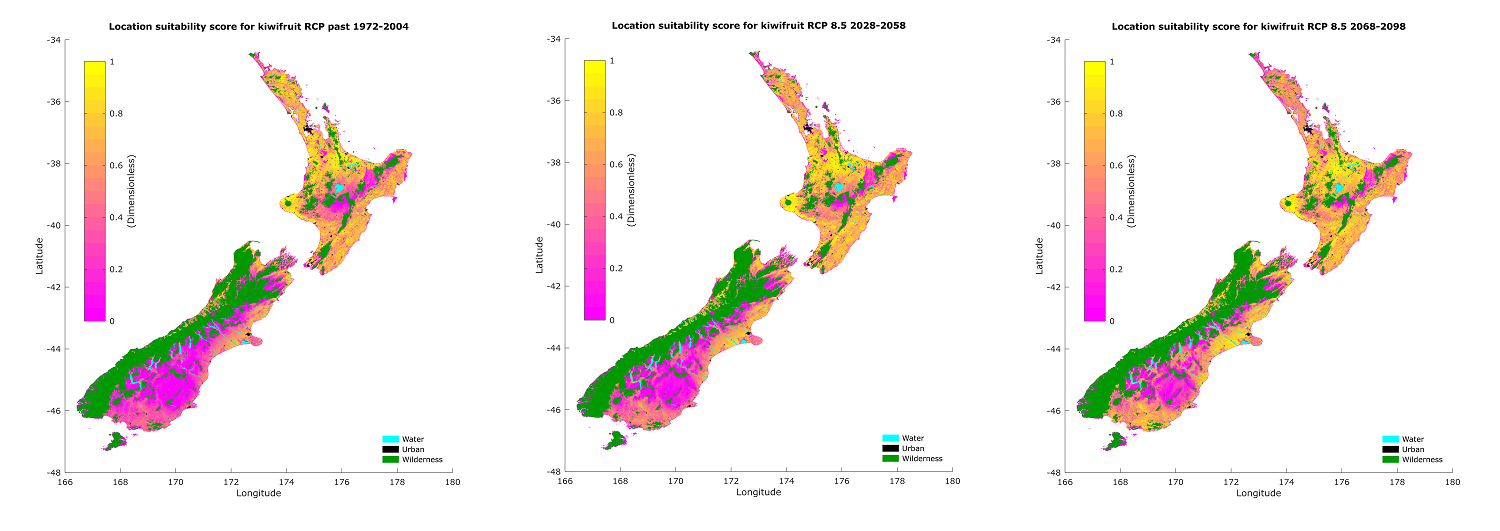Kiwifruit - crop suitability under climate change
Data and Resources
-
Kiwifruit - suitability score at the historical baseline (1972-2004) TIF
License: CC BY-NC 4.0 Attribute to: PFR Description This layer is the six...
-
Kiwifruit - suitability score under RCP 2.6 mid century (2028-2058) TIF
License: CC BY-NC 4.0 Attribute to: PFR Description This layer is the six...
-
Kiwifruit - suitability score under RCP 2.6 end of century (2068-2098) TIF
License: CC BY-NC 4.0 Attribute to: PFR Description This layer is the six...
-
Kiwifruit - suitability score under RCP 4.5 mid century (2028-2058) TIF
License: CC BY-NC 4.0 Attribute to: PFR Description This layer is the six...
-
Kiwifruit - suitability score under RCP 4.5 end of century (2068-2098) TIF
License: CC BY-NC 4.0 Attribute to: PFR Description This layer is the six...
-
Kiwifruit - suitability score under RCP 6.0 mid century (2028-2058) TIF
License: CC BY-NC 4.0 Attribute to: PFR Description This layer is the six...
-
Kiwifruit - suitability score under RCP 6.0 end of century (2068-2098) TIF
License: CC BY-NC 4.0 Attribute to: PFR Description This layer is the six...
-
Kiwifruit - suitability score under RCP 8.5 mid century (2028-2058) TIF
License: CC BY-NC 4.0 Attribute to: PFR Description This layer is the six...
-
Kiwifruit - suitability score under RCP 8.5 end of century (2068-2098) TIF
License: CC BY-NC 4.0 Attribute to: PFR Description This layer is the six...
-
Kiwifruit - crop suitability under climate change (2023 v1)_PREVIEW.pngPNG
License: CC BY 4.0 Description This is the data preview image for the...
